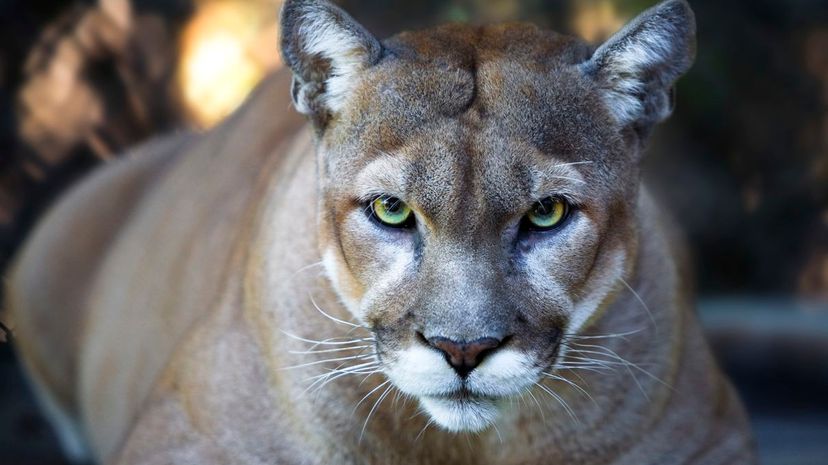
About This Quiz
Every year, thousands of brave adventure-seekers spend months training, shell out tens or hundreds of thousands of dollars and head for the Himalayas on a quest to climb Mt. Everest, the world's tallest mountain. While many make it, some don't, and even those that do reach the summit often rely on Sherpas to carry their load, bottled oxygen to help them breathe and technologically advanced gear and equipment to protect them from the harsh weather.Â
And then there are the animals in this quiz, who manage to make mountain living look way easier than those humans taking selfies at the top of Everest or K2. Some, like the yak or the llama, are just plain made for high-altitude living and actually struggle if forced to live closer to sea level. Others might not have the natural features to thrive in the mountains but have adapted over time to live successfully on steep terrain. Finally, some of these animals are just opportunistic, heading up to new heights as their habitats are threatened or when conditions are more favorable at higher elevations than low ones.Â
If we give you an image, can you name the mountain animal it belongs to? Prove it with this quiz, and don't worry ... There's not a single Yeti or Snow Monster in the bunch!

Brown bears live in mountain ranges all over North America, Europe and Asia. While the average member of this species is between 5 and 8 feet tall and weighs 700 pounds, according to National Geographic, the largest Brown Bears are found in Alaska and Western Canada. Despite their size, these creatures can run as fast as 30 mph and are a significant threat to humans who happen to stumble across them.
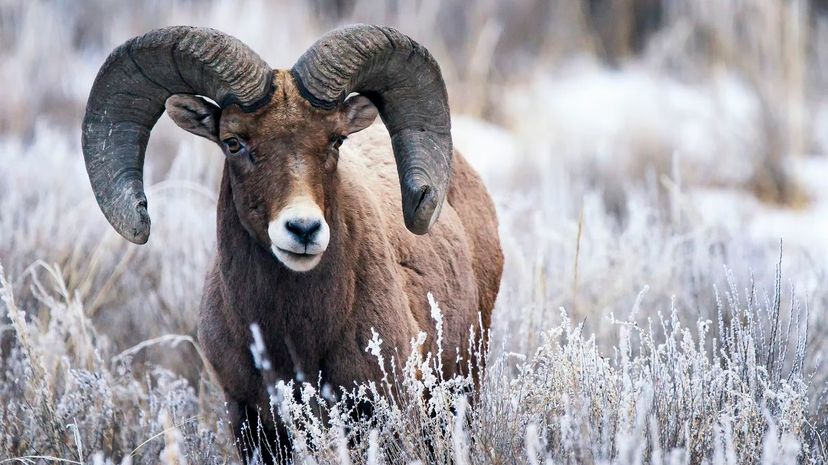
Male Bighorn sheep, known as rams, have massive curved horns atop their heads which can weigh more than 30 pounds. Females, or ewes, also have horns which are much smaller than those of males. Found throughout the Rocky Mountains, these sheep have rough feet for traction and split hooves for balance on rocky terrain.
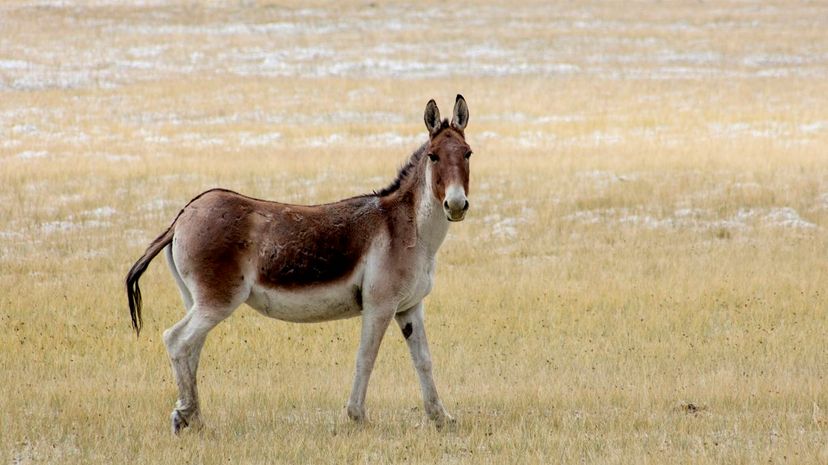
The kiang, or wild donkey, is an animal weighing in between 500 and 800 pounds that lives in large herds throughout the Tibetan Plateau. Despite its large size, the kiang is a plant-eater, and its biggest natural predator is the wolf.
Advertisement
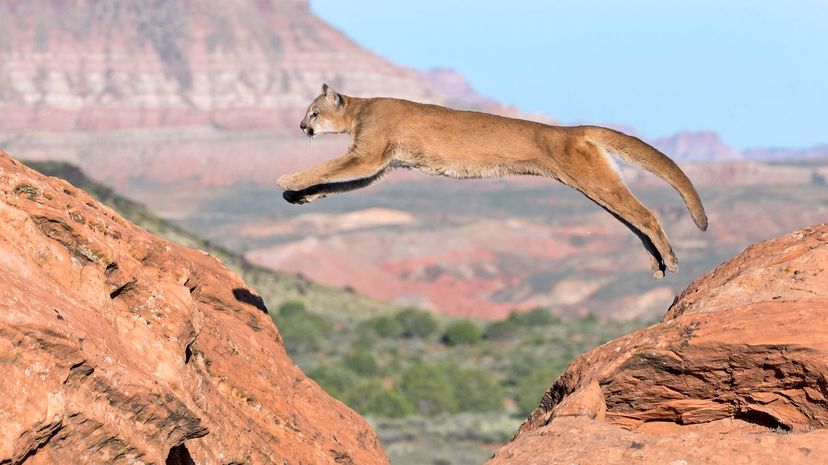
Mountain lions live all over the Americas, though their range is smaller than it once was thanks to habitat encroachment. These wild cats have tremendously strong legs for jumping and jaws powerful enough to make quick work of a deer at mealtime. While these lions don't roar as you might expect, female members of the species might emit sharp screams to communicate.
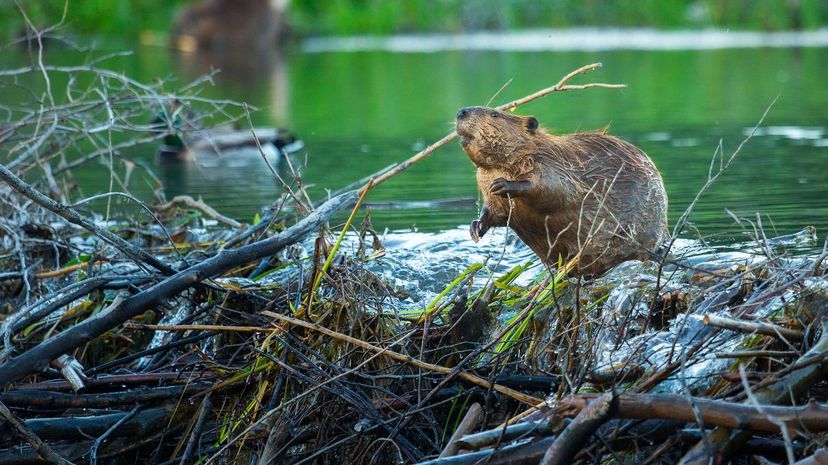
Awkward on land, the beaver has webbed feet and a paddle tall that allow it to swim up to 5 mph. These herbivores, which are known to scientists as Castor canadensis, take down trees to block streams and build their dwellings.
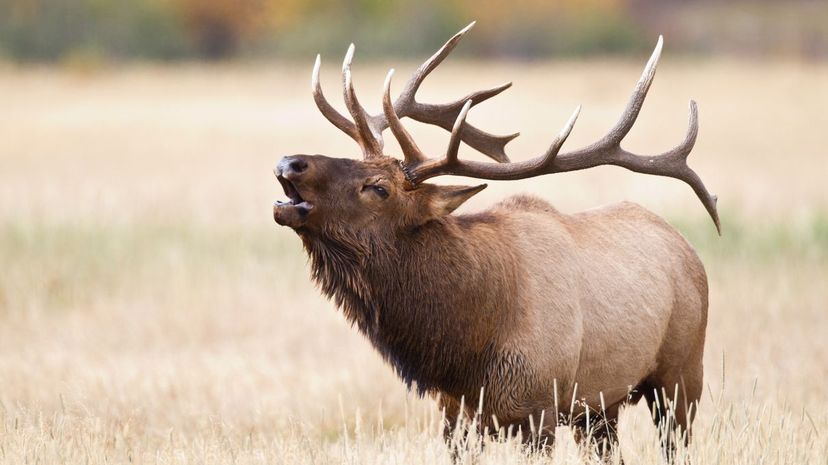
Sized between a deer and a moose, elk have antlers that can be 4 to 5 feet tall, representing half the animal's overall height. While elk once roamed all over North America, they are now found primarily in the mountainous regions of the Western U.S. and Canada.
Advertisement
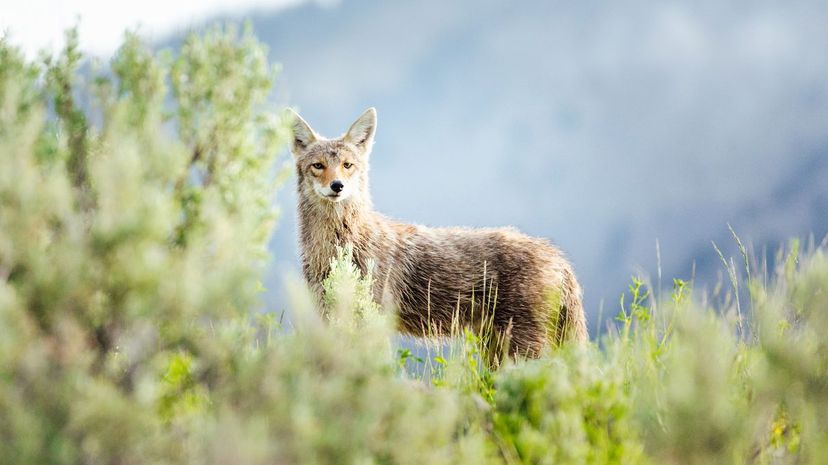
Weighing in between 20 and 50 pounds, coyotes are wild dogs that can run more than 40 mph over a short distance. An important part of Native American traditions, these mountain dwellers aren't picky eaters and will feast on anything from grass to fish or even small domestic pets.
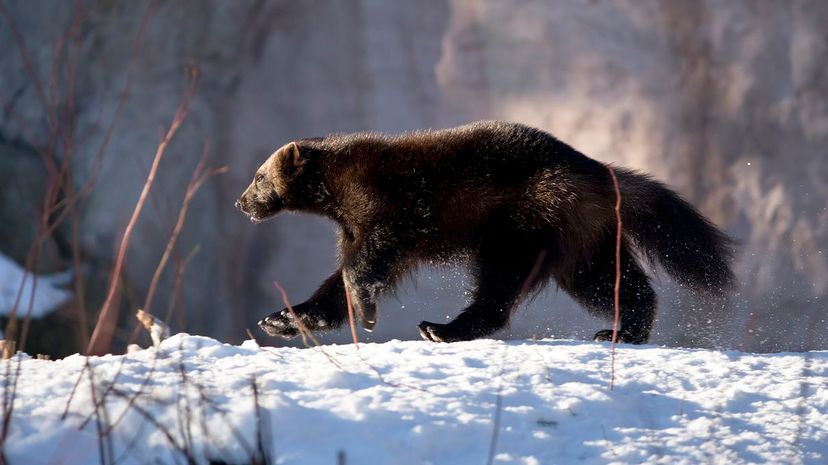
Yes, wolverines are real animals, and not just some name made used by characters in superhero movies. The North American Wolverine, which kind of looks like a mix between a bear and a fox and weighs as much as 40 pounds, lives throughout the Rocky and Sierra mountain ranges.
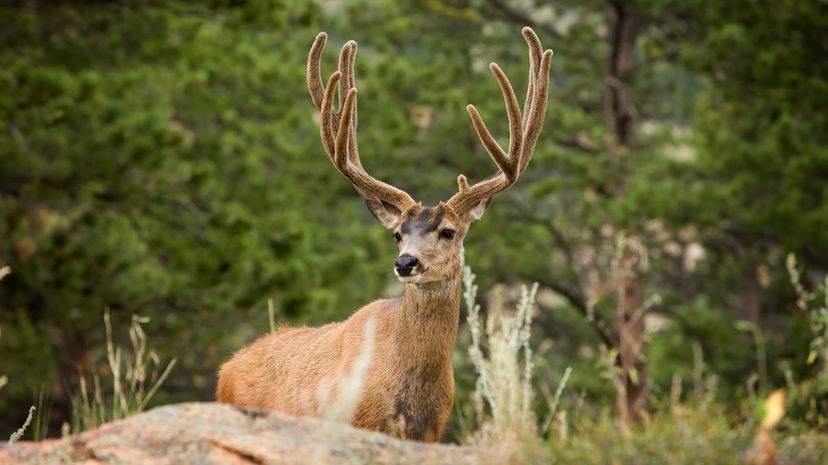
Native to Western North America, the mule deer consists of seven different subspecies, including varieties that dwell in the mountains. Males weigh 200 pounds on average, while females are about 50 pounds lighter. Both have strong antlers and a black-tipped tail that helps to distinguish this creature from other deer species.
Advertisement
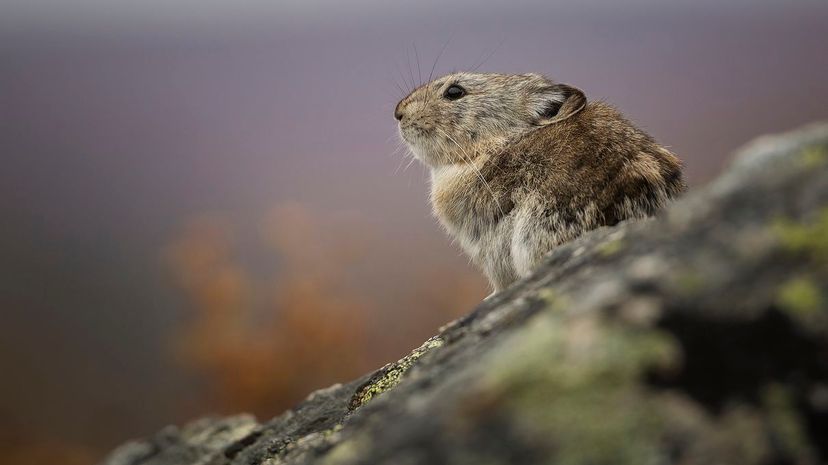
Ochotona princeps, also known as the pika, is a hamster-like critter measuring 6 to 7 inches long. The pika is known for its sharp claws and various vocal songs and calls and lives North America but is also found among the highest altitudes of any mammal in the Himalayas of Asia.

Found on the Tibetan Plateau at heights of 10,000 to 17,000 feet above sea level, the Tibetan sand fox thrives at high altitudes. Known by the scientific name "Vulpes ferrilata," this animal lives in mated pairs and dines on lizards, small rodents and insects.
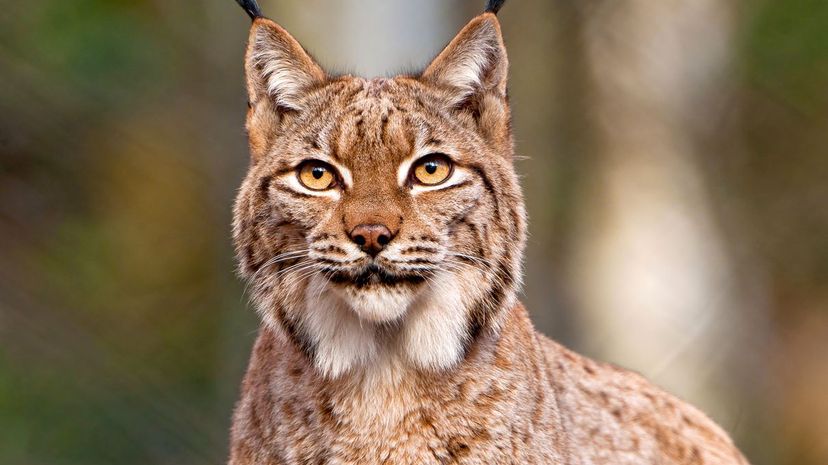
Endangered in the U.S., according to Defenders of Wildlife, the Canada lynx lives in mountainous regions of North America. Just 2 feet tall and 2 to 3 feet long, it weighs up to 25 pounds, but its most distinctive feature is its huge feet, which work like snowshoes to allow the lynx to move over the snow with ease.
Advertisement
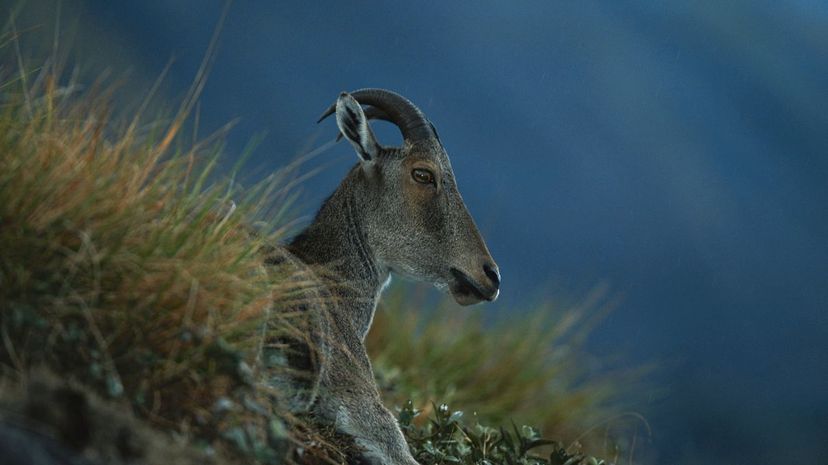
A relative to wild goats, the tahr lives at elevations up to 16,000 feet, in the Himalayas, but can also be found in the U.S. and New Zealand. Tahrs weigh up to 200 pounds and are ideally suited to mountain living thanks to hooves which are flexible on the inside but tough on the outside, allowing it to balance as well as it hooks its feet into rocky crevices.
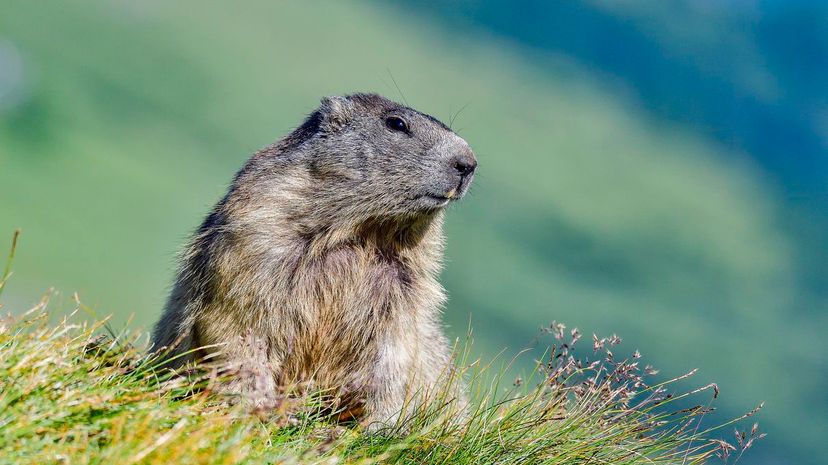
The U.S. National Park Service calls the marmot the largest member of the squirrel family ... Pretty generous for a creature that tops out at around 11 pounds! In the U.S., you can spot marmots in the Black Hills, the Rockies and the Sierra Nevada range, but only in the summer, because these critters are true hibernators who stay out of sight in colder months.
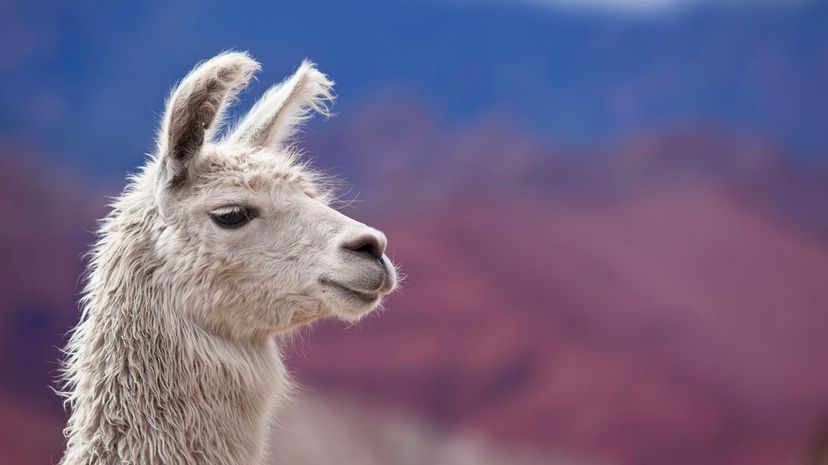
Four feet tall at the shoulder and weighing in around 250 pounds, llamas are pack animals that can carry a heavy load as far as 20 miles in a single day, according to National Geographic. Native to the Andes Mountains, this creature is similar to the alpaca, which is smaller than the llama and has better hair.
Advertisement
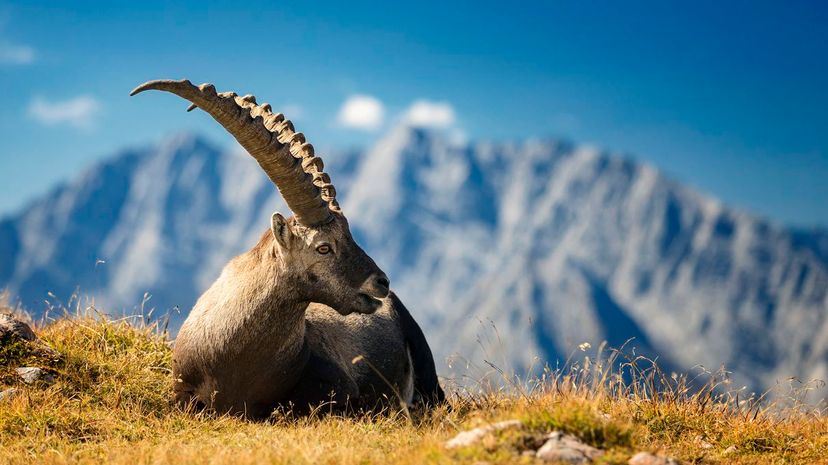
A relative of the mountain goat, the ibex has huge curved horns and weighs in at 250 pounds on average. While both sexes of ibex have horns, those of the male are larger than those of the female.
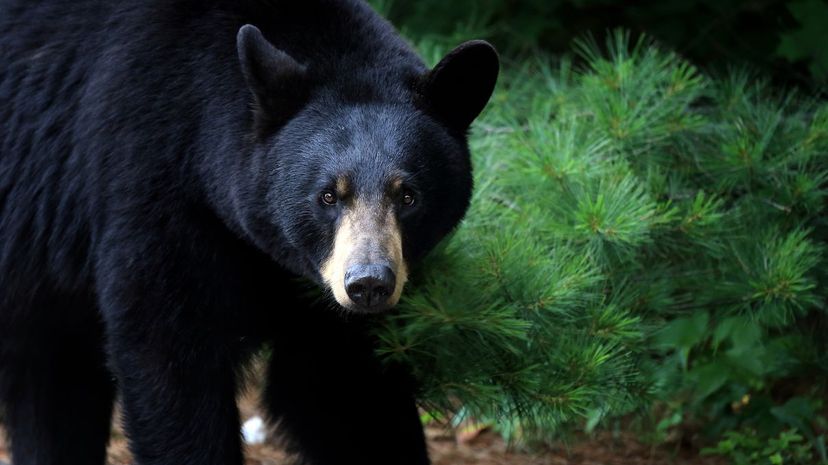
The smallest bear on the continent, Black bears are native to North America. Defenders of Wildlife estimates that around 600,000 of these creatures run wild throughout 40 U.S. states and Canada. At 150 to 300 pounds on average, with some individuals weighing in over 500 pounds, this is not an animal you want to come across in the wild.
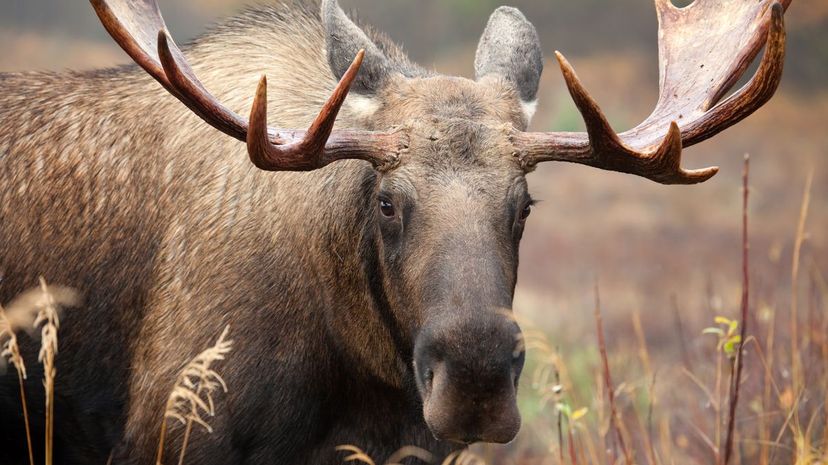
They might be related to deer, but moose are a whole lot bigger than their fellow family members. Not only are these animals as tall as a grown man, but they can weigh as much as 1,400 pounds. They're also surprisingly fast and aggressive, according to the U.S. National Park Service, so steer clear of moose on your next mountain trek.
Advertisement
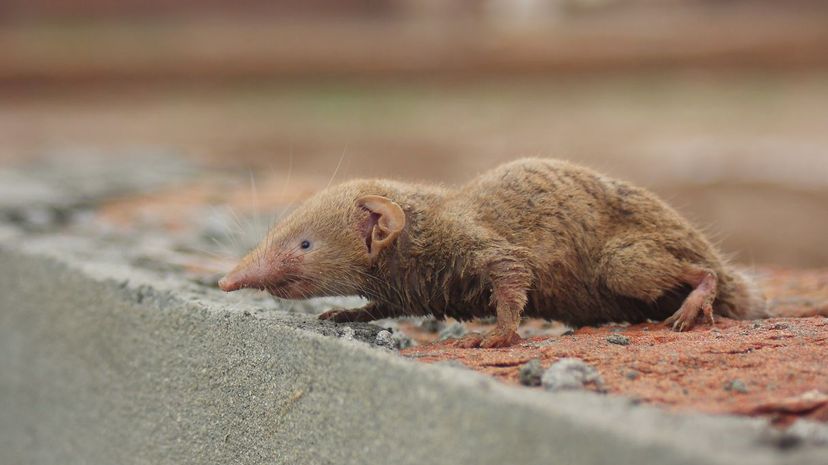
The shrew has one pretty big claim to fame: It's super smelly, which helps discourage predators, according to the Minnesota Department of Natural Resources. Found all over the U.S. and Canada, various species of shrew can range from 2 inches to 6 inches in length or more. One unusual species, the Palawan moose shrew, is found only on a single mountain in the Philippines and only above 5,000 feet!
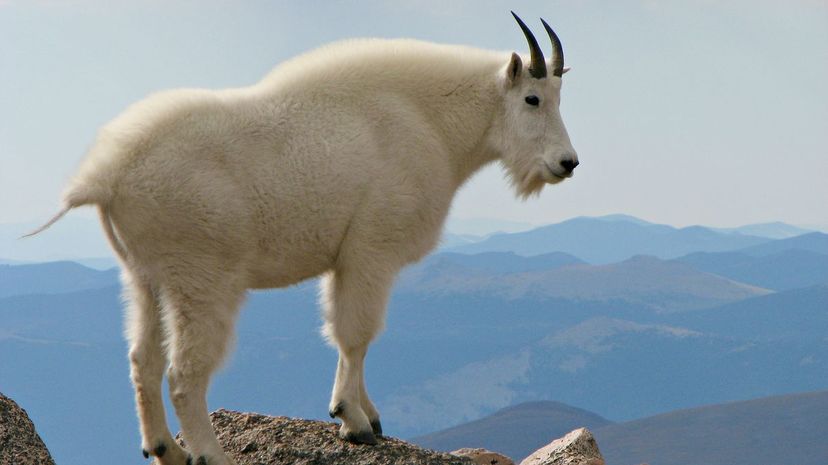
Yup, that's a goat ... A Rocky Mountain goat, to be precise, and it's just made for mountain living. It has rough pads on its feet for traction, cloven hoofs to grip rocky terrain, a white coat for camouflage in mountain snow and an unexpected ability to leap over 12 feet in one bound.

Native to the mountains of Western China, the giant panda uses only bamboo to fuel its 220-to-330-pound body. That means these creatures spend a lot of time eating because the average panda needs to eat 26 to 84 pounds of bamboo every day, according to the World Wildlife Fund.
Advertisement

Found only in the cooler northern mountains of North America, the Snowshoe hare has a unique coat that is brown during the summer and white during the winter for maximum camouflage. This prolific breeder has huge rear feet, allowing it to walk on snow without sinking below the flakes.
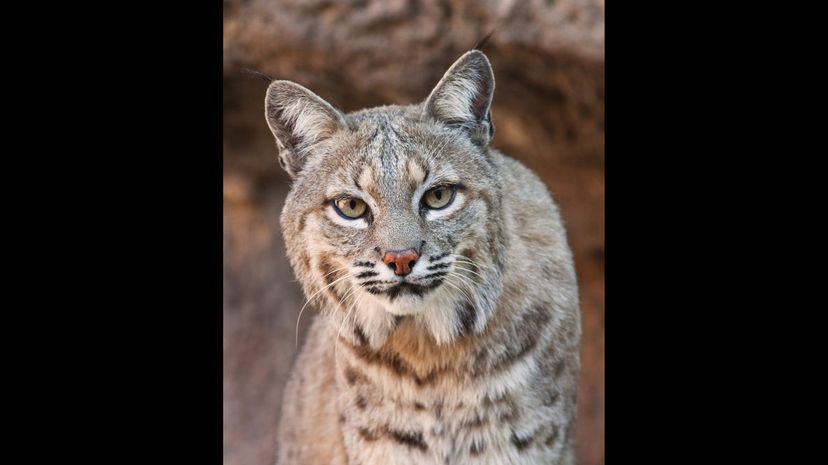
So named because of its stubby tail, the bobcat is the most common wildcat in North America. While Defenders of Animals estimates that there are around a million of these cats out in the wild, most do their best to avoid people, preferring to dine on rabbits and other small mammals.
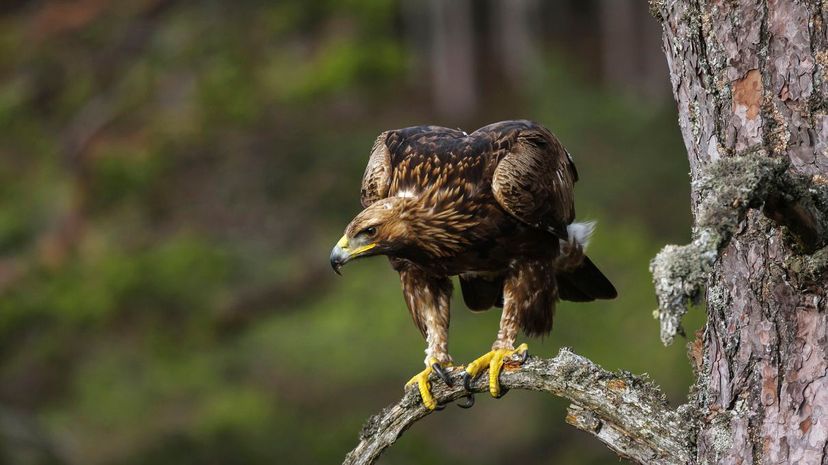
Similar in size to the bald eagle, golden eagles differ slightly from their more famous family members. Not only do these animals have a ring of golden feathers around their necks that give them their name, but they are powerful predators that feast on foxes, dogs and other mammals, while bald eagles are mostly scavengers.
Advertisement

The biggest claim to fame of the skunk is the oily gland below its tail, which can produce a truly stinky oil for the skunk to spray when threatened. Standard striped skunks live all over the U.S., including the mountains, while an unusual species known as the Western spotted skunk makes its home only in the Rockies.
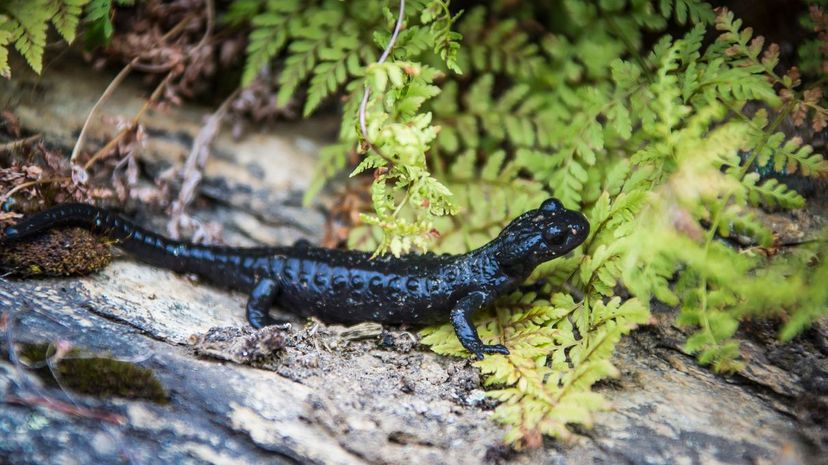
You might not expect amphibians to live at high altitudes, but the alpine salamander actually lives more than 2,000 feet high in the Alps. It's easy to identify thanks to its glossy black skin, but the most unusual thing about this animal is its gestation period, which ranges from 2 to 4 years!

"Lontra canadensis," more commonly known as the otter, is a muscular critter with a body built for swimming. Its muscular build and sturdy webbed feet allow it to move through the water at eight mph, according to the Smithsonian National Zoo.
Advertisement
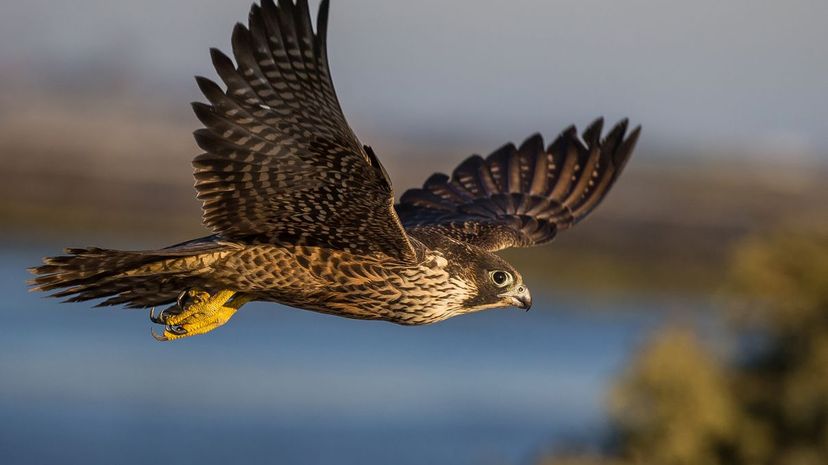
When the peregrine falcon is ready to strike at its prey, it dives at speed approaching 200 mph, giving it the title of world's fastest bird. While this species has been threatened significantly by the use of DHT and other pesticides, it can still be found on mountain cliffs throughout North America.
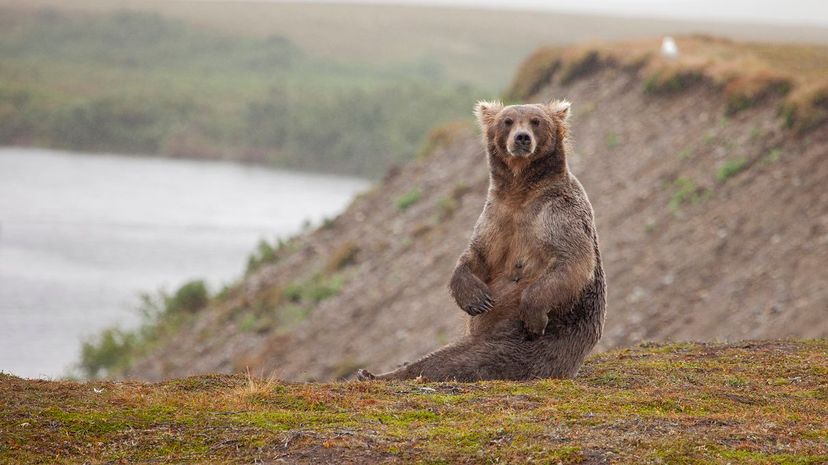
Though the species is threatened in the U.S., there are still plenty of wild grizzly bears out there wandering wild in mountainous regions. At 800 pounds or more and capable of running up to 30 mph, this is an animal you should avoid at all costs.
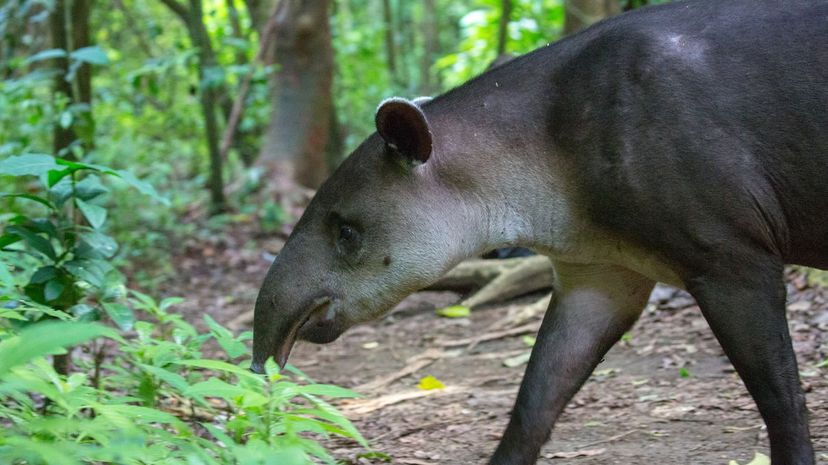
The largest mammal in the Andes, according to the World Land Trust, the mountain tapir has a trunk-like nose similar to that of an anteater. Because they have long been hunted for their meat, there are only around 2,500 of these 300-to-500-pound animals left in the wild.
Advertisement
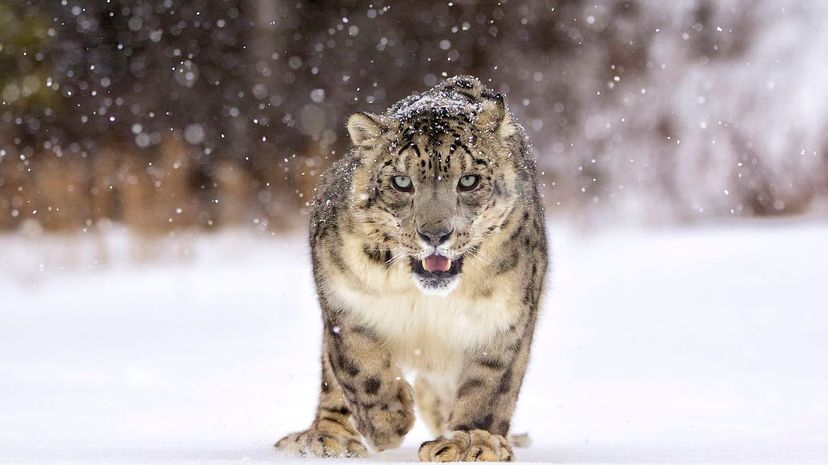
The spotted gray coat of the Snow Leopard allows it to blend into the snowy mountains of East Asia that this creature calls home. Listed as vulnerable by the World Wildlife Fund, there are only 4,000 to 6,500 of these beautiful cats left in the wild.
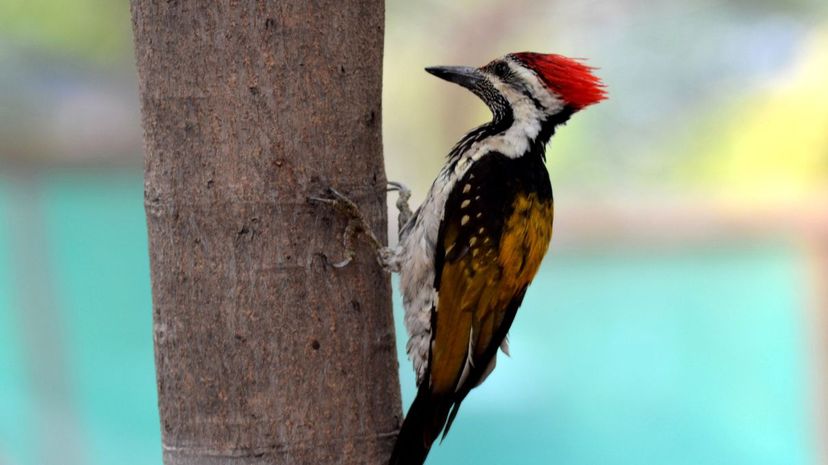
A variety of woodpeckers live in mountain ranges throughout the world, including the three-toed and black-backed woodpeckers of the Rocky Mountains in North America. With a third eyelid to protect their eyes from flying debris, these birds can tap away at trees more than 10,000 times in a single day, according to the Audubon Society.

The red fox measures 18 to 36 inches long, but its impressive tail can add another 2 feet to that length. Known to scientists as "Vulpes vulpes," this animal has thick fur for warmth and can also wrap its tail around itself as a blanket of sorts when conditions are colder than normal.
Advertisement
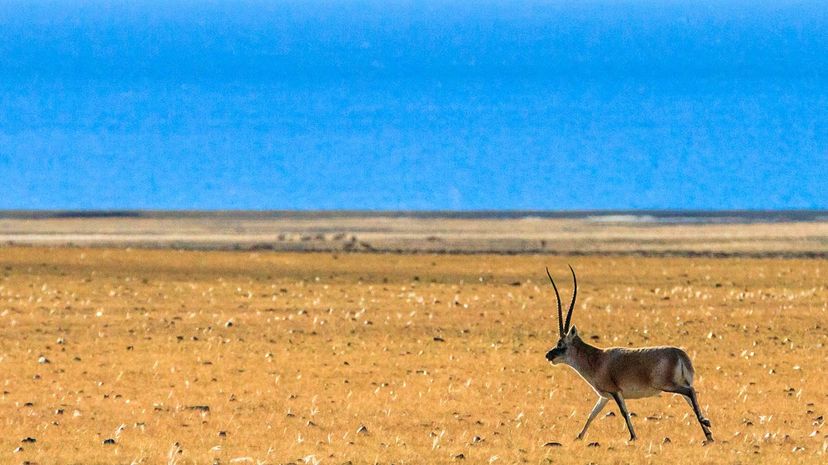
Also known as the Tibetan antelope, the chiru lives in the Himalayas between China and Nepal. Weighing 50 to 80 pounds with long, slender horns, this animal also has a silky undercoat which is used to weave very fine, expensive clothing in the Himalayan region.
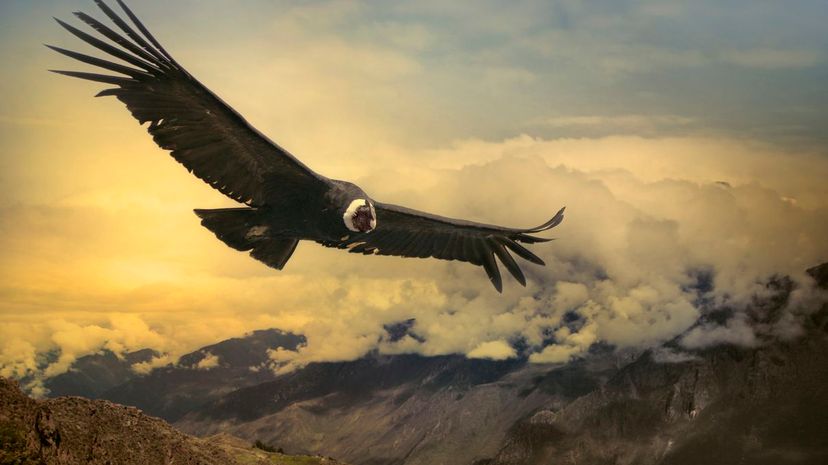
With a weight above 30 pounds, the Andean condor is one of the largest flying birds in the world, according to National Geographic. Black with a collar of white feathers around its neck, this scavenger lives high in the Andes of South America.
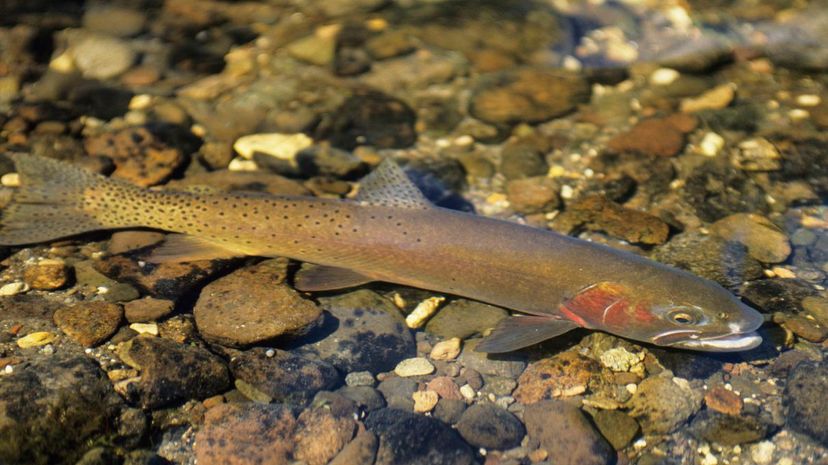
A variety of trout can be found in mountain streams around the world, including the cutthroat trout, which is so named because of the bright red coloring around its "throat." Native to North America, this species thrives in the cold waters of the Sierra Nevada and Rocky Mountain ranges.
Advertisement

They may share the name panda, but the red panda is very different from the giant panda. Weighing in at just around 10 pounds, it has a red coat with a thick undercoat. It lives in the same mountain ranges of eastern China as the giant panda and also dines almost exclusively on bamboo.
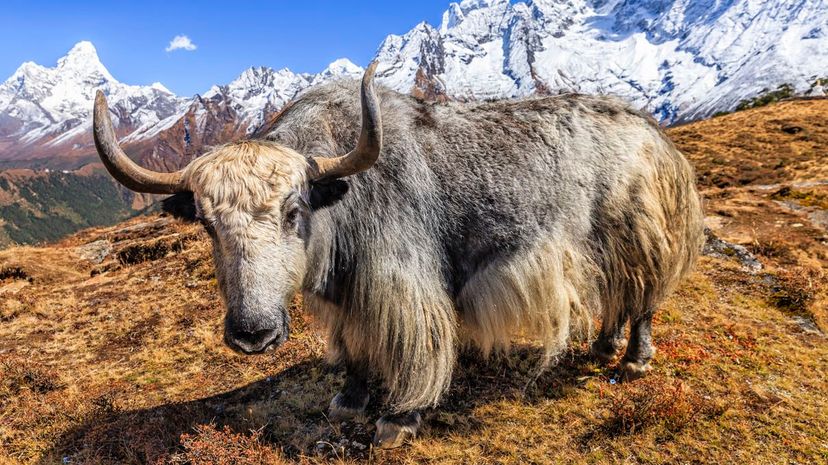
"Bos grunniens," or the common yak, is a massive beast with a hump behind its shoulders and a shaggy mess of thick, dark fur. It has horns that can exceed 3 feet in length, and its heart and lungs are designed to function best at high altitude. The yak's body is so well-suited for mountain living that these animals can suffer when brought closer to sea level.

Owls live in mountains all over the world, with the great horned owl among the most widely distributed owls in North America, according to National Geographic. So named because of tufts of feathers called plumicorns on its head, this owl is well-camouflaged to live among alpine forests.
Advertisement